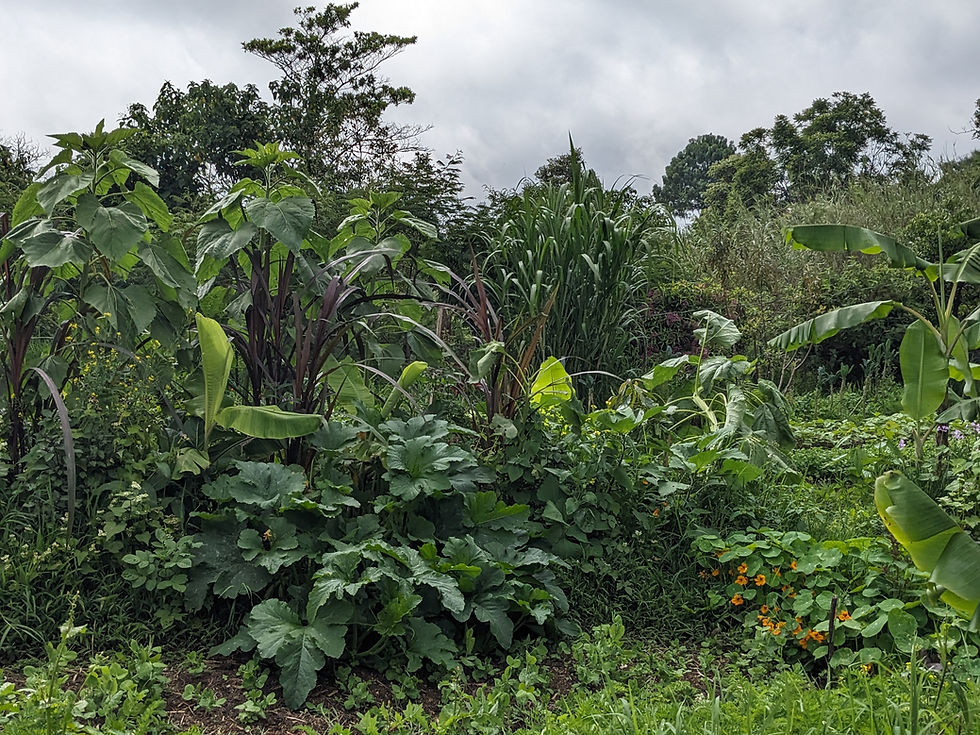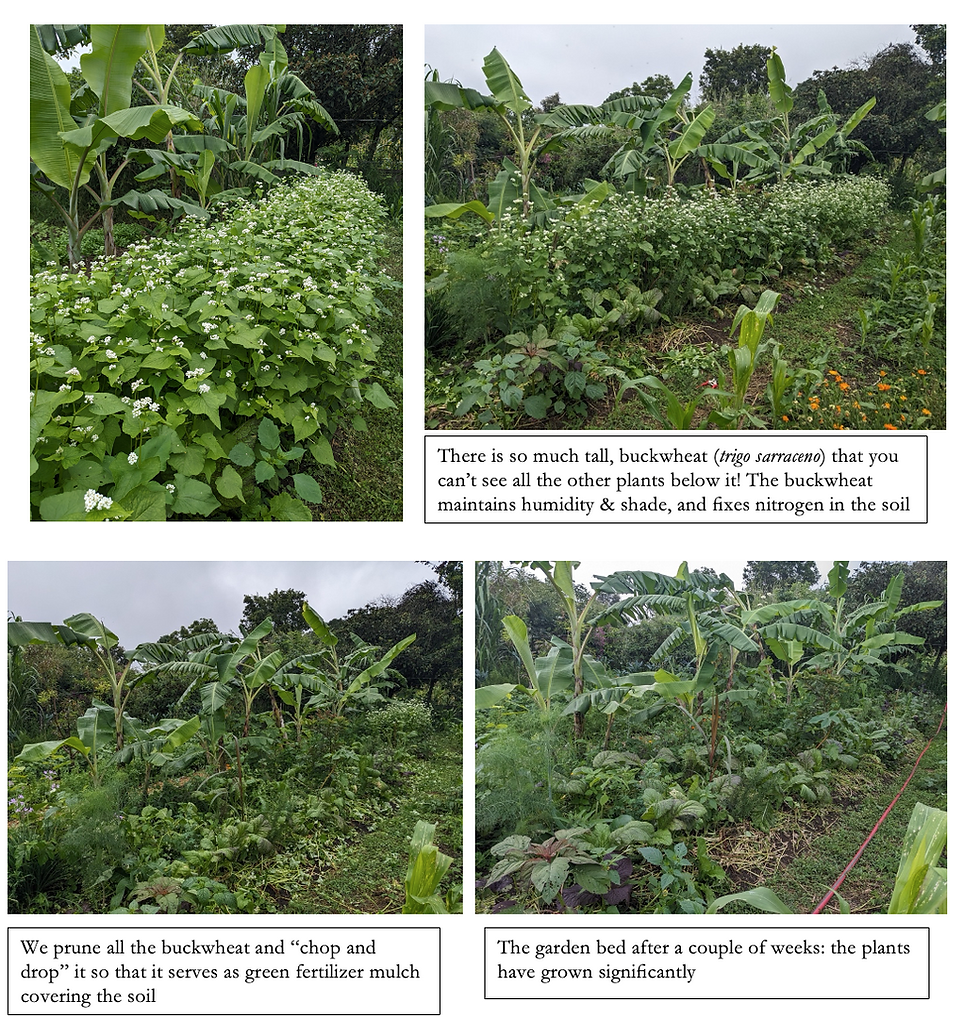Agroecological Responses to Drought
- margaretmaearney
- Sep 19, 2024
- 3 min read
Updated: Sep 3

"I've been waiting for you to call like waiting for the rains in May!" I heard a farmer in Guatemala say jokingly to a friend when he answered the phone. The first rain of the year used to come at the beginning of May, but in the past years the rain hasn't come until much later. This year in came in late June. This means that farmers need to get through a longer dry season. In a monoculture system, without ground cover or diversity of plants, it isn't easy to keep the soil moist. However, in an agroecological system, there are different methods that help retain soil moisture to get through dry spells. Rancho Lum Ha' is experimenting with various methods to prevent crop loss from delayed rains.
Mulch and Cover the Ground
An essential practice is to mulch or cover the ground around your crops. You can cover your soil with a blanket of organic material such as straw, leaves, shredded cardboard, bark, wood chips, etc. It's important to use what's available locally to keep things at a lower cost and to make this more available to and sustainable for rural communities. At Rancho Lum Ha' they shred up the center of the corn cobs and other leftover materials from the corn harvest. Keeping the soil covered will hold in moisture for longer between waterings, prevent moisture from evaporating or running off, and moderate soil temperature.
"Chop and Drop"
The leaves of plants are cut off to cover the ground providing a covering and "green manure" which helps the plant grow and keeps the soil moist. This method is called "chop and drop" because you literally chop off leaves and branches and drop them on the ground. Plants like elephant ear will regenerate these leaves so you don't have to feel bad about cutting them off. It's important to incorporate plants like this that can serve as biomass for green fertilizers, mulch, and ground cover. Some of their favorite biomass plants at the Ranch are botón de oro, Mexican sunflower, mulberry, sacatona, elephant grasses, etc.
Incorporating Borders, Edges, and Trees
When Rancho Lum Ha purchased the property, it was a big open field of 7 hectares. To add more biodiversity and create more spaces for wildlife, they incorporated more borders and edges that separate different spaces. This is one of the 12 principles of permaculture-- "Use Edges and Value the Marginal." Incorporating borders and edges in the garden can trap more moisture. Incorporating a few trees and shrubs also helps keep the soil temperature down and prevents the soil from completely drying out in the dry season. At Rancho Lum Ha' they also incorporate trees into their pasture to create a silvopasture system (integrating trees and forage for the grazing animals).
Syntropic Gardens
Another method that Rancho Lum Ha' is experimenting with during the dry season are syntropic gardens. Syntropic gardens have dense, biodiverse vegetation with planned planting schemes. Let's see an example at Rancho Lum Ha' in the photos below. While it may not seem like it, the four pictures below are of the same garden bed. The plants are initially grown very densely with buckwheat, a crop that adds nitrogen to the soil and will eventually serve as mulch/ green fertilizer. Growing the plants very closely maintains humidity during the extended dry seasons when there is little rain. Then you cut back the plant that serves as biomass, which was buckwheat in this case. In the bottom left picture, you can see the garden bed after I pruned back all of the buckwheat and just left the plants below it-- basil, rue, mustard, lettuce, mint, amaranth, etc. These need to be semi shade-tolerant plants because the buckwheat is giving quite a bit of shade. In the bottom right picture you can see all of the plants exposed after the pruning and how much they have grown.

Rainwater Capture
Finally, at Rancho Lum Ha' they have various different systems of rainwater capture to support their agricultural production during the dry season and in periods of drought.
Some of these methods require assistance (technical and financial) and global solidarity so that farmers can adapt to more extreme weather conditions and changes in climate. Rancho Lum Ha' aims to be a model farm for these methods so that more local people in the region can adopt them.





Comments